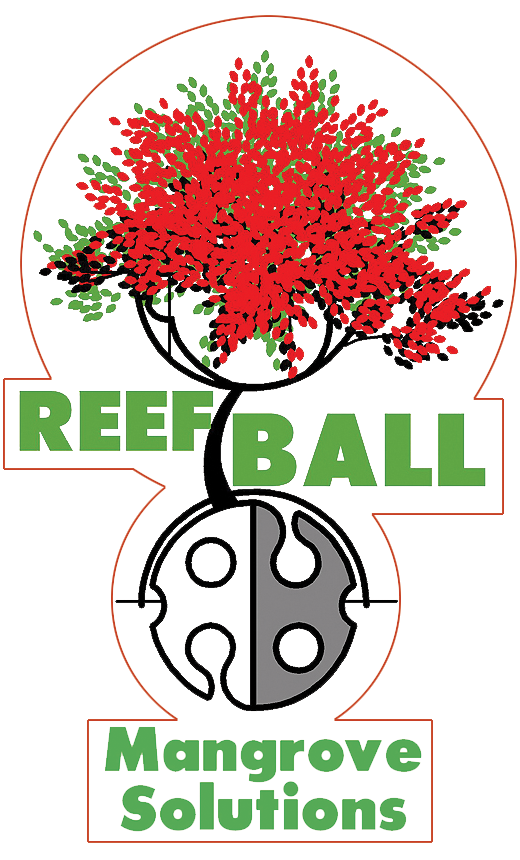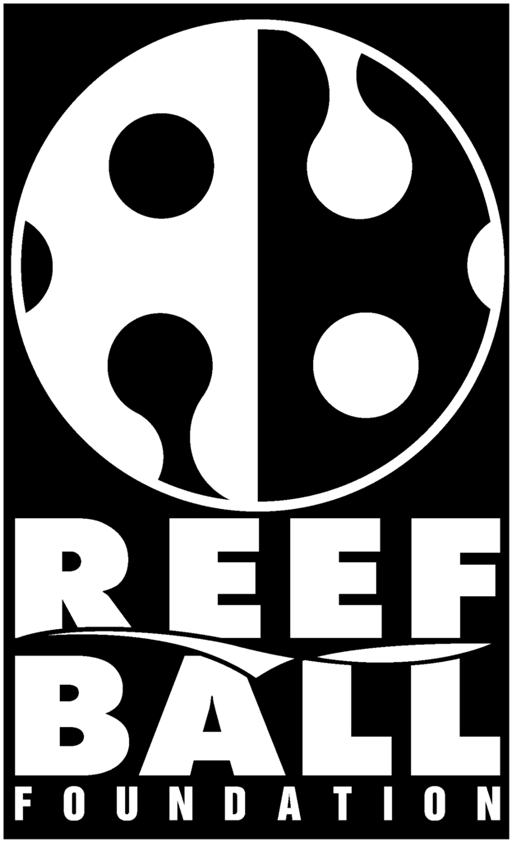reef ball applications
Originally developed with coral reef restoration in mind, Reef Ball applications apply our innovative core Reef Ball Technology for oyster habitat, estuaries, fisheries, mangrove restoration and applications as diverse as anti-trawling devices, lobster culture, recreation and art projects. In breakwater applications Reef Balls are unrivaled in the abatement of shoreline erosion, and new EcoRap living sea walls are breaking the old paradigm of hard barriers to a naturally integrated transition from land to sea, providing habitat while protecting shorelines. Reef Ball rehabilitation applications
While Reef Balls are frequently used for projects without specific environmental goals, the Reef Ball Foundation always ensures that clients adhere to requirements for positive increases in marine habitat.

oyster habitat
What corals do in tropical oceans - transforming calcium and carbon dioxide to stone/reefs, providing habitat for a variety of sessile and free-swimming organisms - is accomplished in sub-tropical waters by oysters.
Among the many other values of oysters is the fact that each oyster can filter as much as 50 gallons of water per day, greatly improving water quality.
From the Gulf coast to New England, Reef Ball projects have been unsurpassed in creating fully-functioning oyster reefs in less than a year with 100% coverage by oysters being typical - not the exception.
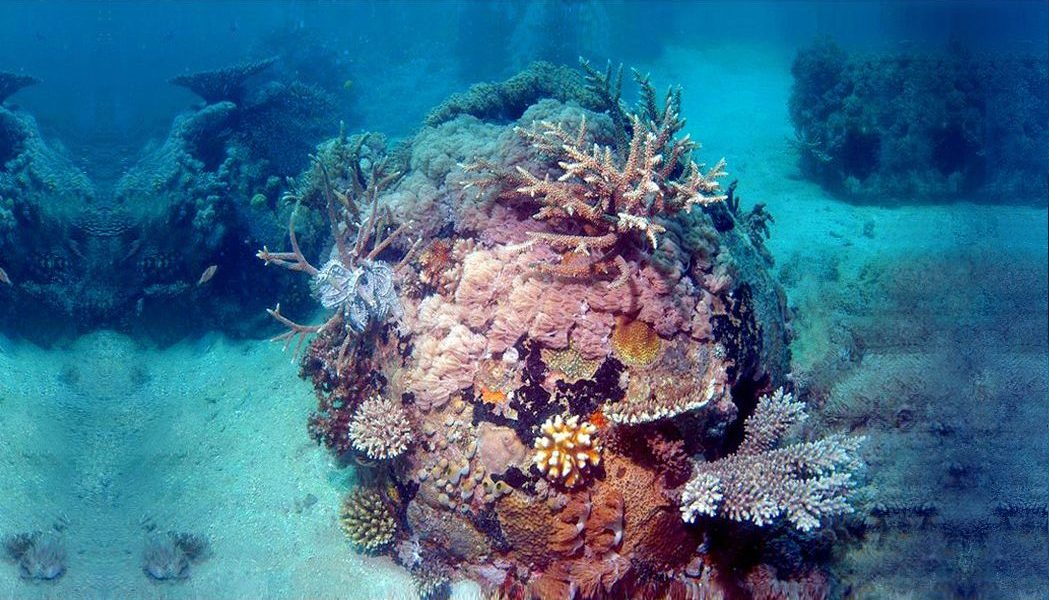
coral reefs and reef rehabilitation
Coral reefs are among the most diverse and valuable ecosystems providing food for millions, habitat for innumerable species, protecting coastlines, creating jobs, are a source of medicines and of great cultural importance for many people around the world.
Read more about the importance of coral.
Hanau ka 'Uko-ko'ako'a, hanau kana, he Ako'ako'a, puka
"Born the coral polyp, born the coral came forth"
– Kumulipo,
Hawaiian hymn of creation
submerged
breakwaters
Submerged breakwaters, like natural reefs, allow smaller waves to pass over so natural sand transport along the coast is maintained. Larger waves are disrupted reducing wave energy and reducing erosion. Read more about Reef Beach and shoreline protection.
Background: Dominican Republic 1999
for protection
and renewal
Natural reefs and Reef Balls as wave attenuation devises (WADs) also create habitat providing environmental benefits beyond erosion control making them ideal for a variety of Living Shoreline applications.
Background: Dominican Republic 2001
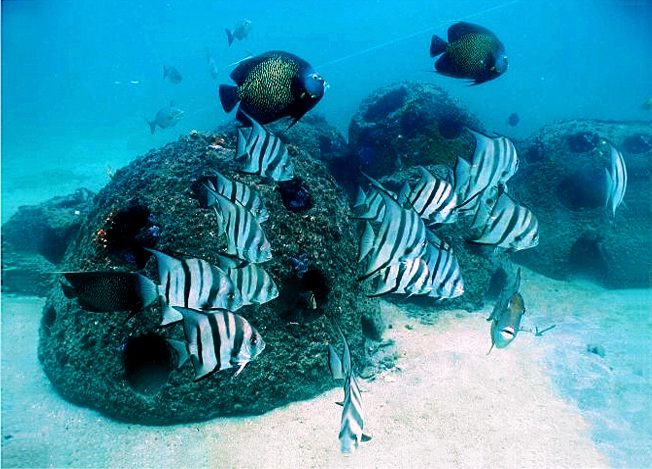
fish attraction and population enhancement
Designed reefs enhance habitat for fish and other organisms which populate and breed in and around them with a cascading increase in aquatic life as a food chain develops - often with greater diversity than adjacent natural reefs. Local economies can also benefit from recreational fishing and tourism opportunities that result.
See the Port Phillip Bay Reef Ball projects in Australia and the Fish Reef Project in California.
lobster culture
Reef Ball Foundation researchers have developed a Spiny Lobster culture system integrating a modified Layer Cake-style Reef Ball with standard larval lobster collectors and a feeding system allowing lobsters to feed from the safety of their lairs while increasing growth rate.
Various-sized ledge and void layers allow habitation at all stages of the life-cycle while each layer being smaller at the perimeter than the interior spaces provides greater protection.
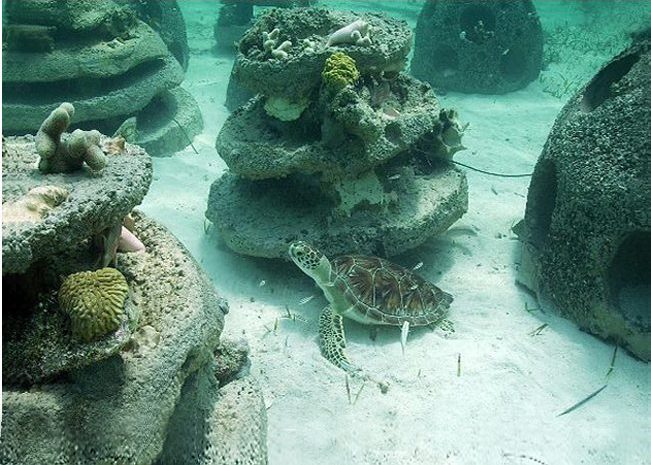
recreation
Designed reefs can be constructed for recreational diving, snorkeling or often to enhance tourism, all the while providing these amenities also increase marine habitat to benefit the environment. In fact, all Reef Ball projects are required to have a habitat or environmental enhancement component.
Background: Snorkel trail, Providenciales,
Turks & Caicos Islands
mangroves
In marine ecosystem restoration water quality and interconnected habitats are often critical to success. Mangroves are one habitat found in tropical seas that improve water quality and provide interconnected living space for reef life.
Mangrove restoration is an essential step in the campaign to protect and rehabilitate nearshore habitats.
Background:
Mangrove nursery in the Cayman Islands.
Planting mangroves in littoral zones is often difficult as waves and debris can damage young mangrove plants. The Foundation has developed a system using small Reef Balls as planters for safe planting of propagules.
We can offer an array of solutions for your mangrove restoration or initiation projects through our
Reef Ball Mangrove Solutions Division.

